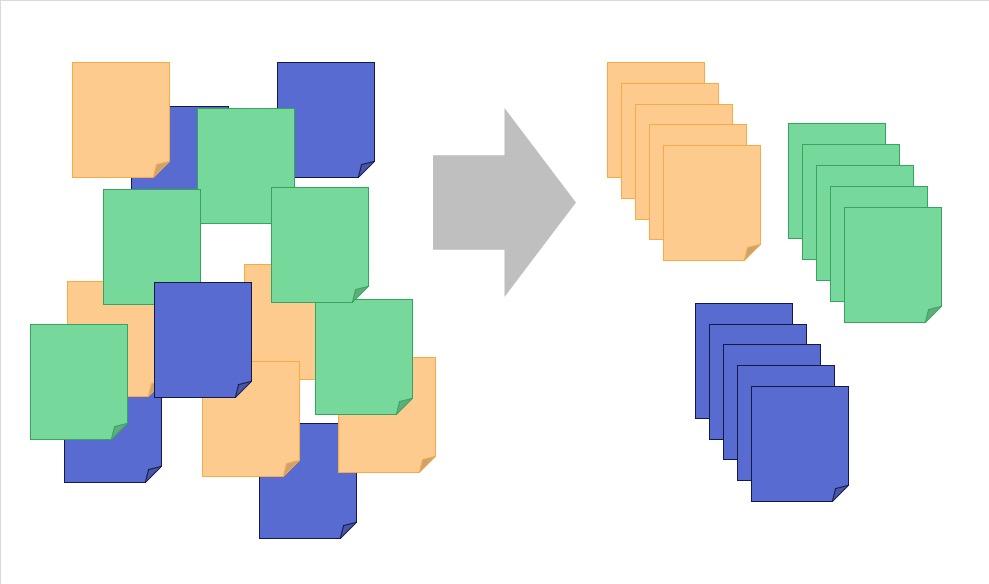Affinity Mapping: A Powerful Tool

What I need is an exact list of specific unknown problems we might encounter.—A clueless manager
Of all the techniques I’ve used, affinity mapping consistently delivers great results. By leveraging a team’s collective knowledge, you brainstorm a bunch of information to quickly find patterns and themes.
The term “affinity diagram” was devised by Jiro Kawakita in the 1960s but teams have been grouping data into groups based on natural relationships for thousands of years.
Affinity mapping can be used to create product themes and epics, and it is super-helpful when creating market positioning and messaging.
Here’s how we used Affinity Mapping when we started developing Under10 Playbook.
We described briefly the personas we were targeting: 1) Meghan, the new product manager, and 2) Alan, the head of a product management team. What problems can we solve for them? In some cases, they have the same problem but articulate them differently.
For example, Meghan needs a place to define and store her product documents so she can find them again. Alan needs a place to access all the documents composed by all the product managers. Meghan needs to know what format and fields are necessary in her organization’s method; Alan wants to ensure that all product managers are using the same templates.
To arrive at this, we used the traditional journalism questions: who, what, when, where, why, and how. Personally, I like to use questions from the persona’s point of view.
Here are some of the issues facing Meghan:
- What’s a good persona template?
- What format works best for stories?
- How can I make sure my work is complete?
- What information should I put in a business case?
- What belongs in a public roadmap?
- What templates are used for my team?
- And so on…
Keep writing more and more questions (or stories, if you prefer) and then look for patterns. As we looked at questions, we saw phrases like “what information” and “good template.” From this list, it’s clear there’s a need to get the team using the same set of templates. From another set of questions, we saw our customers needed a place to store everything related to a product.
We articulated a long list of problems that became
- Centralize—put everything in one place
- Standardize—ensure every document is consistent
- Guide—help new people know what information is needed.
This list of problems drives our business case, our product stories, and our positioning. Imagine sitting down with your marketing team or an agency with a positioning document grounded in personas and problems. They will hone the message and make sure it’s grounded in the key themes: Centralize, Standardize, and Guide.
Imagine also the power of a sales tool based on all the problems that you’ve articulated. I’m thinking of a two-page list of problems and a company pen: the sales rep asks clients to tick off all the problems they have, and then tailors all communication around this defined set of problems.
Product stories begin with personas and problems. Work with your development team to solve them. Positioning and promotional messaging begins with personas and problems. Work with your marketing team to communicate that you solve them and how.
Affinity mapping. Find the patterns in a big bunch of compelling ideas to distill them down to the vital few.

